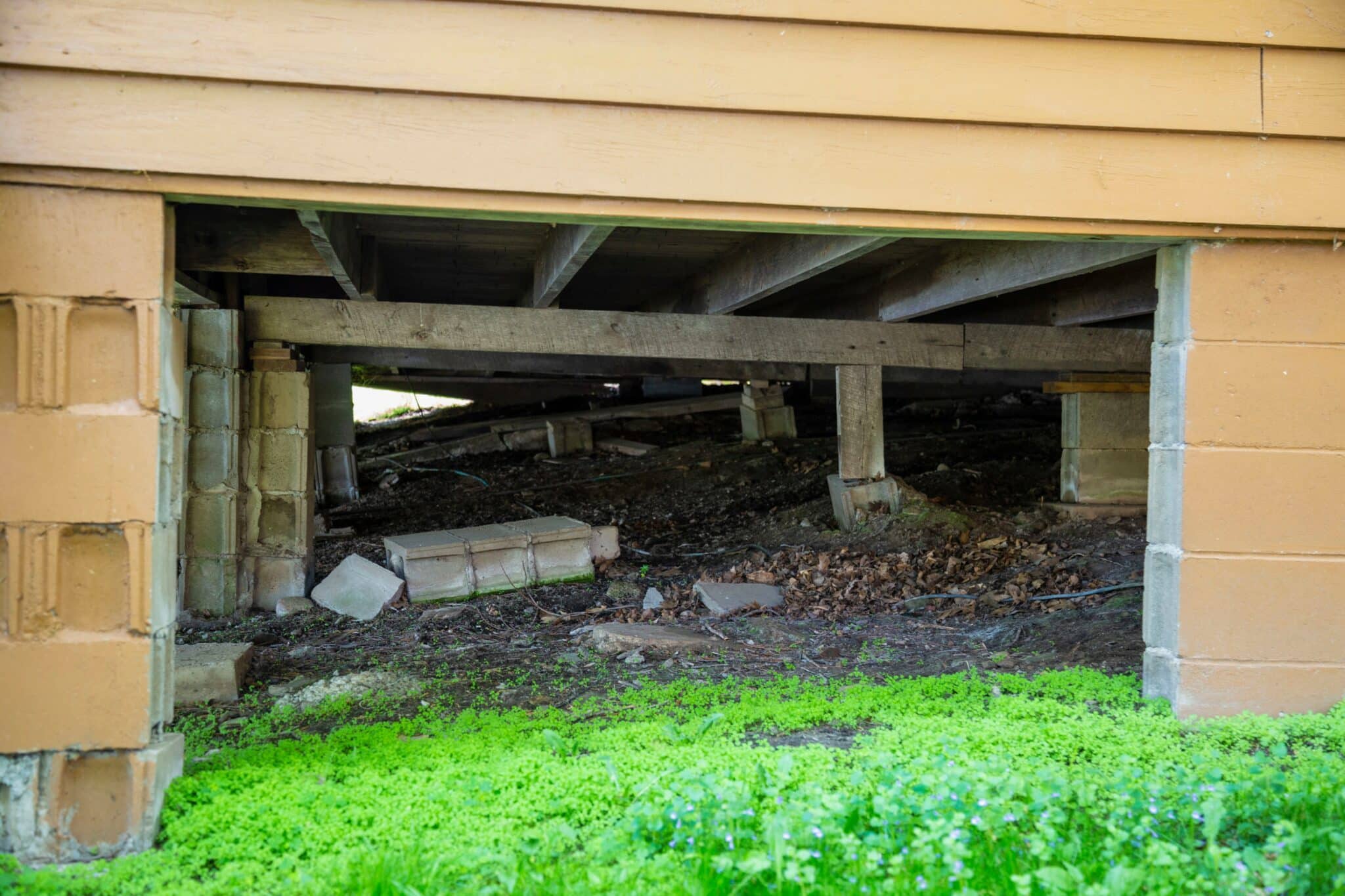Past Due: A Home Inspector Foundation Inspection Claim
Last Updated November 9, 2023

Some foundation inspection claims against home inspectors can lie in wait for years beneath a home. Then, when your client hires another inspector or professional to inspect, those cracks and shoddy supports can reach up from their metaphorical grave to surprise you.
You might think that clients would be hesitant to accuse you of missing foundation or structural issues discovered long after inspecting the foundation. After all, clients should realize that foundation cracks can develop in the intervening time since the original inspection, right?
That’s what one inspector thought until an attorney’s letter arrived regarding a small, one-story home he had inspected in Oregon. The letter accused him of failing to discover “significant cracks and structural flaws in the foundation” that another inspector had identified during a pre-sale inspection.
“[Your] client relied on [your] report as an important factor in their decision to purchase the property,” the letter said, implying that the client wouldn’t have bought the home had they known about the foundation defects.
The client demanded over $19,000 to cover repair costs.
The surprise: The cracks and structural defects had been discovered 10 years after the initial inspection.
 Undiscovered, or Dormant?
Undiscovered, or Dormant?
The home inspector called our claims team for help. We checked the allegations to see if they had any merit, and whether the issues existed at the time of the inspection or had yet to be there.
A decade before, the inspector had gone into the crawlspace, as evidenced by the photos in his report. He’d examined the crawlspace without finding any major concerns and stated that to the client.
Ten years later, what had the new inspector discovered while inspecting the foundation? Major cracks, as previously stated, and issues with the supports to the structure. In multiple places, cinderblocks were placed as supports for beams with the holes facing horizontal, which decreased their structural support and was against modern code. Further, some of the cinderblocks weren’t tall enough to reach the wooden support beams, and someone had stuffed various wooden shims in between to bridge the gap.
After comparing the two reports, our team found some answers: The wooden shims and the cinderblock placement issues were visible in our inspector’s report photos, but the inspector didn’t mention them as issues. The cracks, however, were not present during the inspection.
But even if some issues were visible, were they defects the inspector should have called out? And was he liable?
 Out of Scope and Out of Time
Out of Scope and Out of Time
Home inspections aren’t prophetic or exhaustive. The cracks in the home weren’t visible at the time of the inspection. If cracks had manifested after the inspection, they wouldn’t be within the inspector’s scope.
As for the cinderblocks and the shims, they lied outside of the inspector’s standards of practice (SOP). The inspection wasn’t a structural or code examination. Additionally, the cinderblock orientation wasn’t an issue during construction some 60 years prior, and the blocks were still intact.
Most importantly, though, this claim was time barred since it was made so long after the inspection. Liability for professional services, like many things, has an expiration date.
Our claims team wrote and sent a denial of liability letter to the claimant’s attorney, explaining these arguments and rebutting their accusations.
The claimant wasn’t happy, to say the least. They called the inspector back and demanded at least the inspection fee back, along with the assumed difference in repair costs that inflation would have added in the 10 years—around $5,000. When our attorneys held our ground, the claimant threatened to file a complaint with the state’s construction board. However, the board only responds to complaints filed within 12 months of the inspection. In the end, the claimant had no more avenues to pursue the claim, and they dropped it. The claim closed at no cost to the inspector.
Timeless Lessons
You don’t have to predict or fear when long-unnoticed defects come to light. With some key takeaways from this claim, you can prepare and feel secure.
Include a statute of limitations in your contract.
Time changes everything. Given enough time, the most pristine home can become a tragic site. This becomes a problem for home inspectors when clients think post-inspection problems were actually pre-inspection coverups or misses.
It isn’t realistic to hold an inspector accountable for a professional service from years ago. The good news is that there’s a legal barrier against lawsuits that are too long in the tooth: the statute of limitations.
A statute of limitations is a provision or a law that limits the timeframe for people to take legal action against someone else. Many states have a general statute of limitations in place which, for example, could limit the timeframe to bring a lawsuit to five or six years for professional services. Now, that is still quite a long time for your “snapshot in time” inspection to be a viable subject for a lawsuit. However, you may be able to shorten the statute of limitations for your inspections even further through a contract.
Key provisions in your contract, like the statute of limitations, can be a lifeline when a claim comes knocking. As we saw in this claim, a major part of our claims team’s denial of liability was the fact that the claim was time barred due to the date of the inspection and the inspector’s statute of limitations. Check with your attorney or your insurer to see if your state allows a shortened time to initiate legal action through a statute of limitations provision in your inspection agreement.
In addition, be sure to save your signed pre-inspection agreements for at least five years or as long as possible. The statute of limitations helps no one if you don’t have that client’s copy with the signed signature from before the inspection.
Inspect to your standards, not to codes.
Most inspectors exclude code inspections. Yet some inspectors, due to a sense of responsibility or thoroughness, exceed their standards by stating the ways that a home isn’t code compliant. Sadly, some clients will use that good will against you. Whenever you inspect and report something beyond your standards of practice, you undermine your inspection agreement. This can cause major issues in a claim or lawsuit against you.
The inspector in the story above protected himself by sticking to his standards and not performing a code inspection. However, one way he could have improved and potentially avoided the claim is by encouraging further evaluation. To disclaim defects outside of your standards, simply mention the issue briefly in the report, and then refer them to a specialist. This gives your client some actionable information while preventing you from going beyond your SOP.
 Get a shot of your snapshot in time.
Get a shot of your snapshot in time.
What would have happened if the inspector had looked around the crawlspace and thought, “Looks good to me,” before exiting without taking any pictures? Many inspectors will only photograph the defects they see during inspections, leaving out areas that seem okay. If you do that, however, you miss the opportunity to defend yourself from frivolous claims.
This case study’s inspection photos were invaluable when defending him from his client’s accusations. Our claims team could show where the photos were in the report, as well as the inspector’s comments on them. It was those same photos that helped disprove that the cracks existed when inspecting the foundation originally.
Now, even if you have the forethought to take pictures, your preparation won’t protect you if you throw those photos away after a few years. If this inspector had gotten rid of his photos, it could have led to a messy he-said-she-said situation and to a lengthy and expensive lawsuit. So, save your photos and reports for at least five years or as long as possible. You’ll be glad you did.
We’ll help you put time in a bottle.
Claims don’t always make sense, and they can come up years after the inspection to cause you stress. Don’t waste your precious time calling angry clients, trying to convince their attorneys that you aren’t liable.
Here at InspectorPro, our experienced claims team can save you time and worry by responding to angry clients and representing you in court. We want to be there for you and protect you when new or old inspections come out to haunt you.
Submit an application for E&O and general liability insurance today to get your quote.
And if you are already insured through us, we have crafted a model inspection agreement that uses our many years of successful claims handing experience to defend you better. Tailored to your state requirements and laws, our agreements include key provisions, like the statute of limitations, that can help your business get the protection it deserves. Find out more about our model inspection agreements and get yours here.





